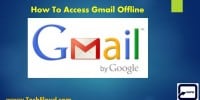Facebook Ad Frequency Vs. Ad Fatigue: Managing Ad Exposure And User Experience
In the realm of digital marketing, ad frequency and user experience often exist in a delicate balance. Particularly on platforms like Facebook, where users are not solely present for product discovery, maintaining this equilibrium is crucial.
Excessive ad frequency can lead to ad fatigue, a phenomenon where users become desensitized to ads due to overexposure, negatively impacting user experience and ad effectiveness. Conversely, too infrequent ads may not effectively reach or engage the target audience.
This article delves into the intricacies of managing ad frequency on Facebook, exploring strategies to avoid ad fatigue, analyzing ad frequency data, and offering best practices. It also presents case studies of successful ad frequency management and discusses the future of this critical aspect of digital advertising.
The goal is to provide insights into creating a harmonious balance between ad exposure and user experience, thus maximizing the potential of Facebook advertising.
Understanding Ad Frequency
Delving into the realm of ad frequency, it becomes essential to comprehend its role in determining the number of times an advertisement is displayed to a specific audience, thereby influencing user engagement and response.
Ad frequency, a fundamental component of digital marketing campaigns, particularly on platforms like Facebook, is directly proportional to the exposure rate of an advertisement. However, it requires careful calibration to balance visibility and user experience.
High ad frequency can lead to saturation, causing ad fatigue, which diminishes user response. Conversely, a lower ad frequency might result in insufficient exposure, limiting the ad’s potential impact.
Hence, it is critical to understand and manage ad frequency to ensure optimal advertisement performance and user engagement, while mitigating the risk of ad fatigue.
The Concept of Ad Fatigue
In the realm of digital marketing, the phenomenon known as ‘ad fatigue’ is a critical concept to understand. Ad fatigue refers to the decline in engagement and conversion rates due to repeated exposure of the same promotional material to the same audience. Ad fatigue leads to a decrease in campaign performance as audiences grow tired of seeing the same advertisements repeatedly.
-
Decreased Engagement: The repetitive exposure to the same ad causes the audience to lose interest resulting in decreased clicks and shares.
-
Lowered Conversion Rates: Over time, the same ad becomes less effective at converting users into customers.
-
Increased Ad Costs: As engagement drops, the cost per action often increases, making advertising less cost-effective.
-
Poor User Experience: Ad fatigue can lead to negative user experience, as audiences may develop a negative association with the brand due to excessive repetition.
Balancing Ad Frequency and User Experience
Striking an equilibrium between the regularity of promotional content and audience receptivity is a crucial aspect of maintaining an effective digital marketing strategy. Essentially, the challenge is to ensure that ad frequency does not lead to user fatigue, thereby diminishing the effectiveness of the promotional content.
In the context of Facebook advertising, a balance must be managed between the frequency of ad exposure and user experience. Excessive ad frequency may lead to ad fatigue, thereby decreasing user engagement and overall campaign effectiveness. Conversely, insufficient ad frequency might reduce ad recall and brand awareness.
Thus, marketers need to optimize ad frequency to ensure that viewers neither forget the ad content nor develop ad fatigue, thereby maintaining a positive user experience and maximizing return on ad spend.
Strategies to Combat Ad Fatigue
The management of ad fatigue, a phenomenon where audiences grow tired of repetitive ad exposure leading to decreased engagement, necessitates a careful approach to advertising strategy.
Implementing techniques such as rotating creative assets, which involves changing ad content regularly to maintain audience interest, can be particularly effective.
Additionally, expanding target audiences, by reaching out to new demographic segments or geographical regions, offers the potential to alleviate ad fatigue while concurrently broadening the company’s reach.
Rotating Creative Assets
Rotating creative assets serves as a viable strategy to combat ad fatigue, ensuring that audiences continue to engage with the content without feeling overwhelmed or bored.
Exposing audiences to different creative materials enhances the user experience, sustains their interest, and prevents saturation of the same advertisement.
The strategy involves:
- Alternating images, copy, and design elements to create diverse visual experiences that captivate and maintain audience attention.
- Incorporating various ad formats to provide a fresh perspective, such as video, carousel, or slideshow ads.
- Utilizing dynamic creative tools that automatically generate different ad combinations based on the target audience’s preferences.
Through this approach, advertisers can manage ad frequency effectively, striking a balance between sufficient exposure and user experience.
Expanding Target Audiences
In order to enhance the effectiveness of their campaigns, marketers often consider expanding their target audiences, a strategy that not only broadens the reach but also raises the chances of securing more conversions. This involves identifying new potential audience segments that may respond positively to the ad, and incorporating them into the target demographic. However, this strategy must be executed with caution to avoid overexposure and ad fatigue, as well as to maintain a positive user experience.
The table below presents the potential benefits and consequences of this strategy:
| Benefit | Consequence | |
|---|---|---|
| Row 1 | Broadens reach | Risk of overexposure |
| Row 2 | Increases conversions | Can lead to ad fatigue |
| Row 3 | Uncovers new audience segments | May dilute brand message |
| Row 4 | Can improve ROI | Requires careful monitoring and management |
Analyzing Ad Frequency Data
Careful examination of ad frequency data provides valuable insights into user behavior and the potential risk of ad fatigue. This analysis can guide marketers in optimizing their Facebook ad campaigns in order to manage ad exposure and enhance user experience.
-
First, it is crucial to monitor the number of times a user sees the same ad. High ad frequency can lead to ad fatigue, thereby reducing user engagement and ad effectiveness.
-
Second, it is important to analyze the time intervals between ad exposures. Short intervals can lead to user annoyance, while long ones may result in reduced ad recall.
-
Lastly, examining the user response data such as likes, shares, comments, and click-through rates can provide insights into user perception and engagement with the ad. This information can help in adjusting the ad frequency accordingly.
Ad Frequency Best Practices
Strategic deployment of promotional content, with a keen attention to repetition and timing, can significantly enhance audience engagement and mitigate the risk of audience disinterest. Central to this strategy is the management of ad frequency. Best practices in this domain suggest maintaining a balance between sufficient repetition for message retention and avoiding excessive exposure leading to ad fatigue.
Advertisers should aim to optimize the frequency rate, which could vary based on the nature of the product, the target audience, and the ad content. A frequency cap should be employed to prevent over-exposure.
Furthermore, incorporating variety in the ad content and format can help keep the audience engaged.
In conclusion, it is crucial to monitor and adjust ad frequency to ensure an optimal user experience and advertisement effectiveness.
Case Studies of Successful Ad Frequency Management
Successful campaigns in the realm of digital marketing often provide valuable insights into the effective calibration of promotional content repetition.
One such case study involves a major fashion brand that adopted a rigorous approach to managing ad frequency. By limiting the number of times a single user saw their ad within a given period, the brand successfully decreased ad fatigue while increasing click-through rates and overall engagement.
Another noteworthy example is a leading e-commerce company that skillfully used frequency capping and audience segmentation. They showed different ads to different audience segments at varying frequencies, resulting in optimized user experience and improved conversion rates.
These case studies demonstrate the importance of strategic ad frequency management in achieving marketing objectives.
The Future of Ad Frequency Management
Looking towards the horizon of digital marketing strategies, the evolution of ad frequency management is expected to play a pivotal role in shaping the landscape of consumer engagement and conversion rates. As algorithms become more sophisticated and data collection more refined, the balance between effective ad exposure and user experience is likely to shift. It is predicted that the future will bring a more personalised approach to ad frequency, taking into account the individual’s interaction history and preferences.
| Future Trends | Impact on Ad Frequency | User Experience |
|---|---|---|
| Advanced algorithms | More refined ad exposure | Enhanced user experience |
| Improved data collection | Individualized ad frequency | Increased personalisation |
| AI integration | Predictive ad exposure | Efficient ad interaction |
| Real-time adjustment | Dynamic ad frequency | Responsive ad experience |
| Personalisation | Customized ad frequency | User-centric approach |
Frequently Asked Questions
How does Facebook’s algorithm determine who sees my ad?
Facebook’s algorithm determines ad visibility through factors such as user interests, demographics, and online behavior. It assesses these parameters to align ads with users most likely to engage, optimizing the advertisement’s effectiveness.
Are there specific industries or markets where ad fatigue is more prevalent?
Ad fatigue prevalence varies across industries and markets, heavily influenced by factors such as product nature, target audience characteristics, and marketing strategies. Further research is required to determine specific high-risk sectors.
What factors outside of ad frequency can contribute to ad fatigue?
Ad fatigue may be influenced by factors beyond ad frequency, such as the relevance of the advertisement, the creative quality, the timing of the ad, and the overall saturation of ads in the consumer’s environment.
How does ad frequency impact the cost of Facebook advertising?
Ad frequency impacts the cost of Facebook advertising as increased frequency can lead to user ad fatigue, potentially decreasing ad effectiveness. Consequently, this necessitates higher ad expenditure to maintain desired engagement levels.
Can the time of day or week affect the effectiveness of ad frequency?
Yes, the effectiveness of ad frequency can be influenced by the time of day or week. Different audience behaviors during various times can impact the reception and interaction with repeated advertisements.






